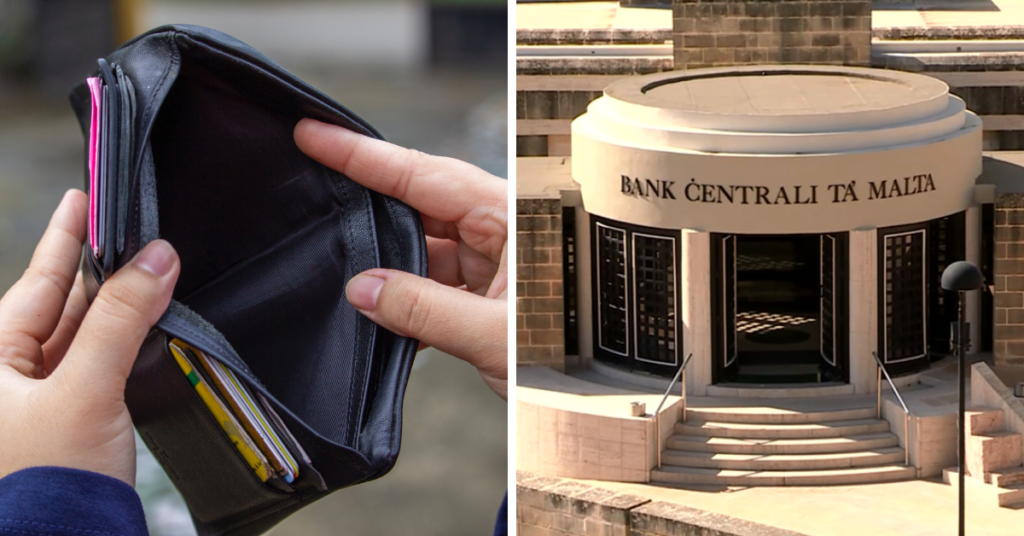Low-Income Households Experience Higher Inflation Than Others But Are Kept Afloat By Government Intervention

Lower-income households experienced a level of inflation higher than that of the average household over the last ten-year period, according to a policy note by the Central Bank of Malta.
The policy note, authored by the bank’s senior economist Jude Darmanin, suggests introducing a second index to track inflation experienced by low-income households more accurately and ensure more effective social grants.
The note explains the results from an investigation into whether the Retail Price Index (RPI), which is used to measure the rate at which the price of goods increases with time, was an accurate measure of the inflation experienced by low-income households.
“The RPI calculates the price change of a basket of goods and services, which is derived from average expenditure shares obtained through the Household Budgetary Survey,” Darmanin explains in the note’s abstract.
“In practice, the representation of an ‘average’ household is skewed towards high-income households, whose expenditure makes up a relatively larger share of total consumer spending.”
As a result, the note states that RPI “might not always accurately measure the inflation rate faced by low-income households, whose consumption basket differs from the overall average for all households”.
The investigation sought to answer three main questions, namely: which household type witnessed the highest inflation, how different inflation experienced by low-income households was from the average and whether social benefits have increased enough to account for inflation.
The investigation looked at data from the decade between 2010 and 2020, with results indicating that there is indeed a difference in the rate of inflation experienced by different household types.
It found that while inflation has generally decreased in recent years, particularly when compared to the 2000s, Malta did experience some periods of high inflation during the period under review.
This was in part driven by higher prices for food and energy, for example, commodities that make up a much higher proportion of low-income household baskets.
“This suggests that overall inflation measures may not have portrayed an accurate picture of cost of living increases faced by low-income households during these periods,” the note says.
The investigation found that while inflation rates were relatively high between 2000 and 2015, “this differential dropped significantly between 2016 and 2019”.
It also found that the purchasing power of low-income households had been maintained in part due to “ad hoc government allowances paid out over the years” over and above the Cost of Living Adjustment (COLA) announced in each year’s budget.
Finance Minister Clyde Caruana recently acknowledged that the cost of some goods had increased recently, pointing to the disruptions to the global supply chain, as well as the UK’s departure from the single market as being two of the main drivers of spikes in the price of certain goods.
Last week the Nationalist Party accused the government of ignoring the increasing cost of living in Malta, adding that it was open to discussing the introduction of a living wage.
The investigation’s results however suggest that while the cost of living is in fact increasing, the government has effectively intervened in recent years to ensure that citizens’ purchasing power is maintained.
Share this with someone that needs to read it
